Lens started this season poorly in Ligue 1, where they occupy 14th place with eight points after eight matches, after being second in Ligue 1 last season with only a four-point deficit to Paris Saint-Germain.
Lens have conceded 13 goals this season, of which four have come from set-pieces, with a percentage exceeding 30%, which indicates a problem in their defensive system in set-pieces.
You might be surprised to know that despite having the worst defensive record in Ligue 1 from set-pieces with four goals — all from corners, equal with Marseille and Montpellier — they are, according to the expected goals (xG) conceded from set-pieces one of the best teams defensively in set-pieces in Ligue 1, where they conceded only 1.38 xG from set-pieces.
This makes them the fifth-best team in terms of xG from set-pieces after Nice with 0.71, PSG with 1.11, Metz with 1.25 and Marseille with 1.27.
In this tactical analysis and set-piece analysis, we will discuss the extent of the polarity between the large number of goals conceded by Lens from set-pieces and their good numbers as xG conceded from set-pieces by knowing their tactics in defending corners because all four goals they conceded at set pieces were from corners.
Lens’ defending system at corners
Lens depend mainly on the man-marking defending system by using only two zonal players; the rest are man markers. The two zonal markers stand in the same horizontal line; one is on the near post, and the other is in front of him, against the in-swinging and out-swinging crosses, but they stand a little outside near the six-yard line against the out-swinging crosses, as shown respectively in the two photos below.
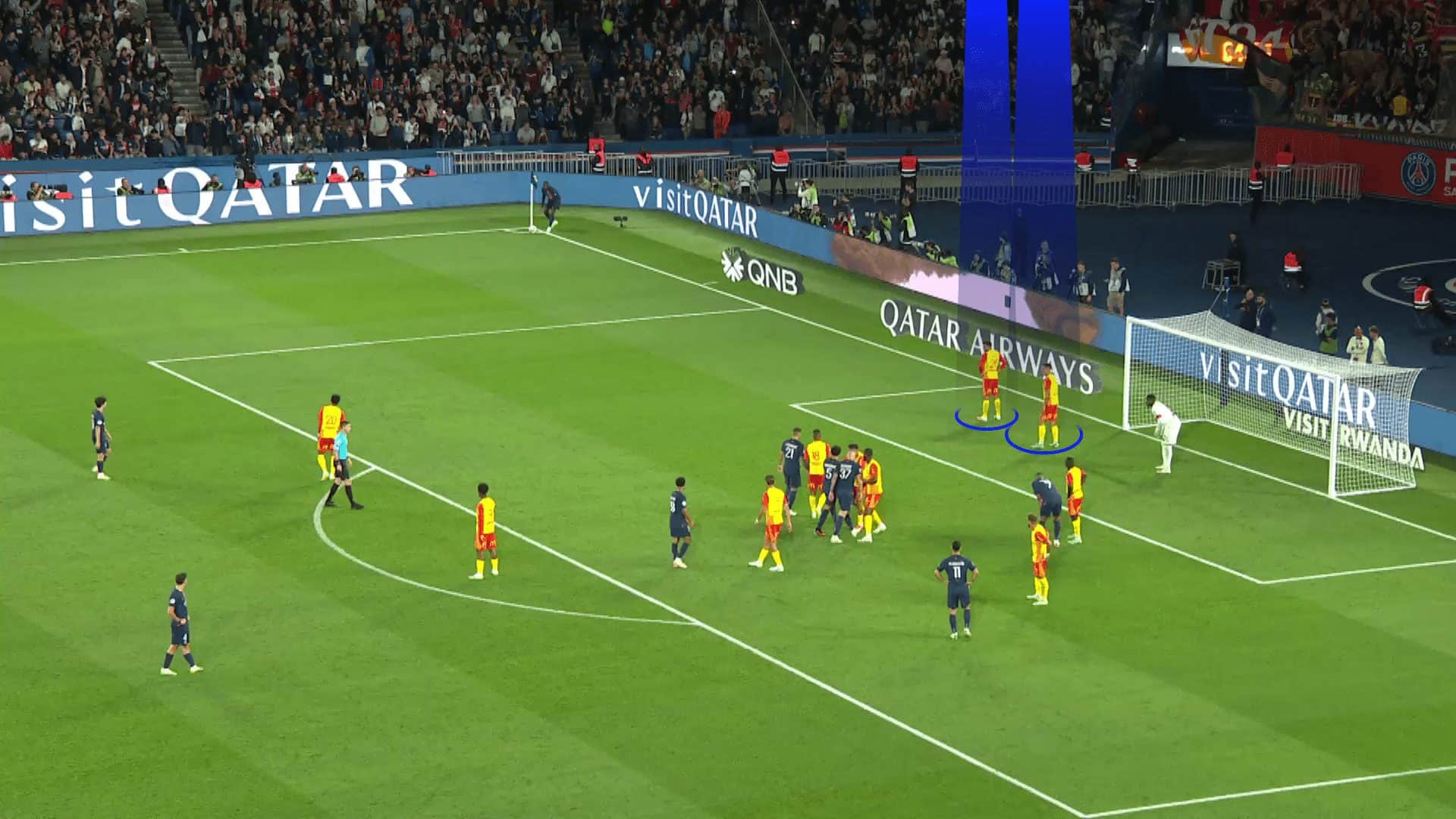
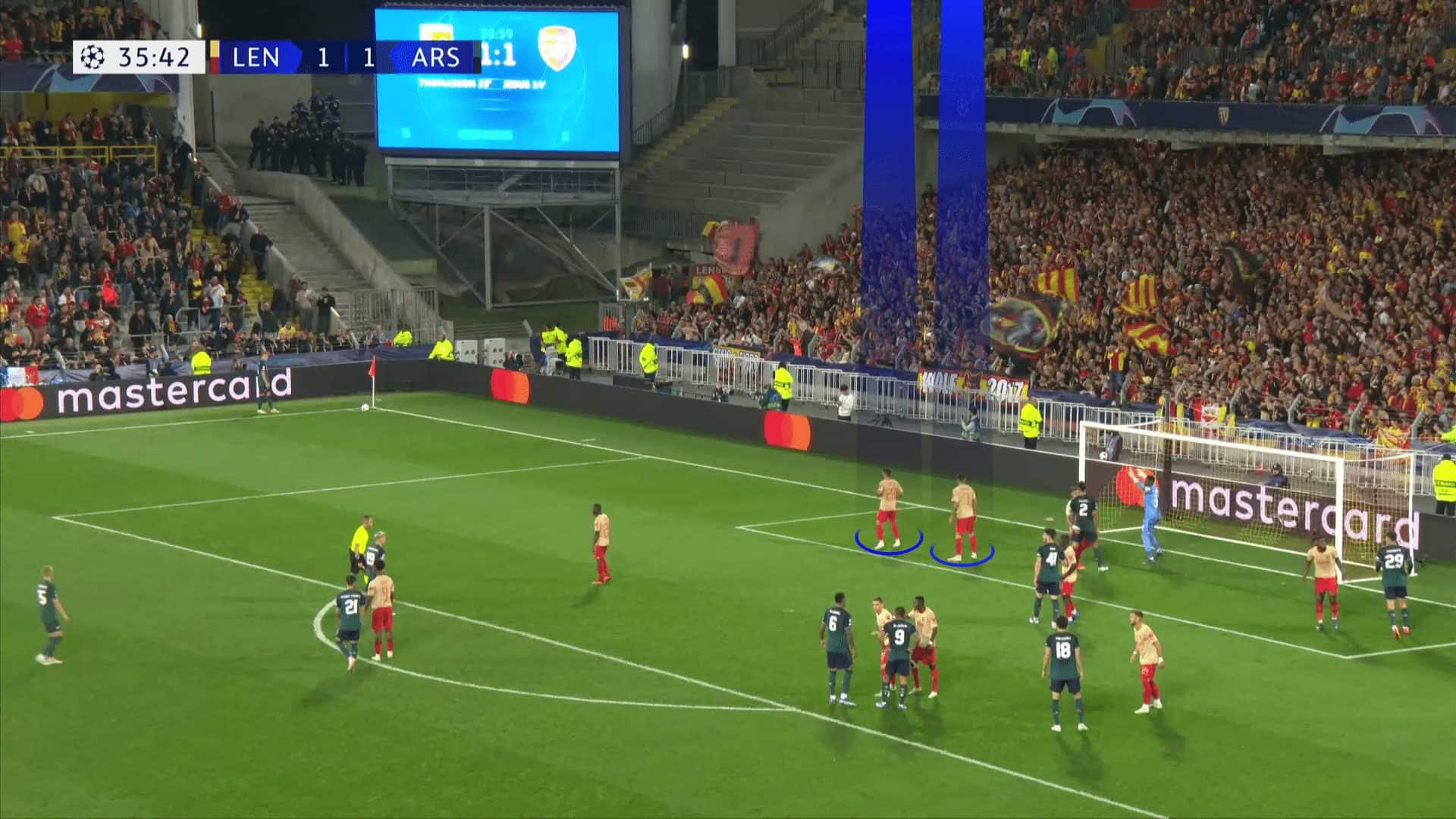
To know the effect of the position of these two zonal markers, we should compare them with Newcastle United, who defend with the same system, knowing that they are the only team in the Premier League who haven’t conceded any goal from set-pieces yet.
In the first photo below, Newcastle United defend against the in-swinging crosses with the same man-marking defending system, leaving only two zonal defenders in blue. Still, they are in inclined positions, not in the same line as Lens’ zonal defenders. They also put one near the post while the other is behind him a little toward the middle of the six-yard line, unlike Lens.
They also instruct the green player to move forward to face the short pass in case the opponent puts a short-option attacker, as in the first photo below, or standing on the near post if the opponent has no short-option attackers, as in the second photo below.
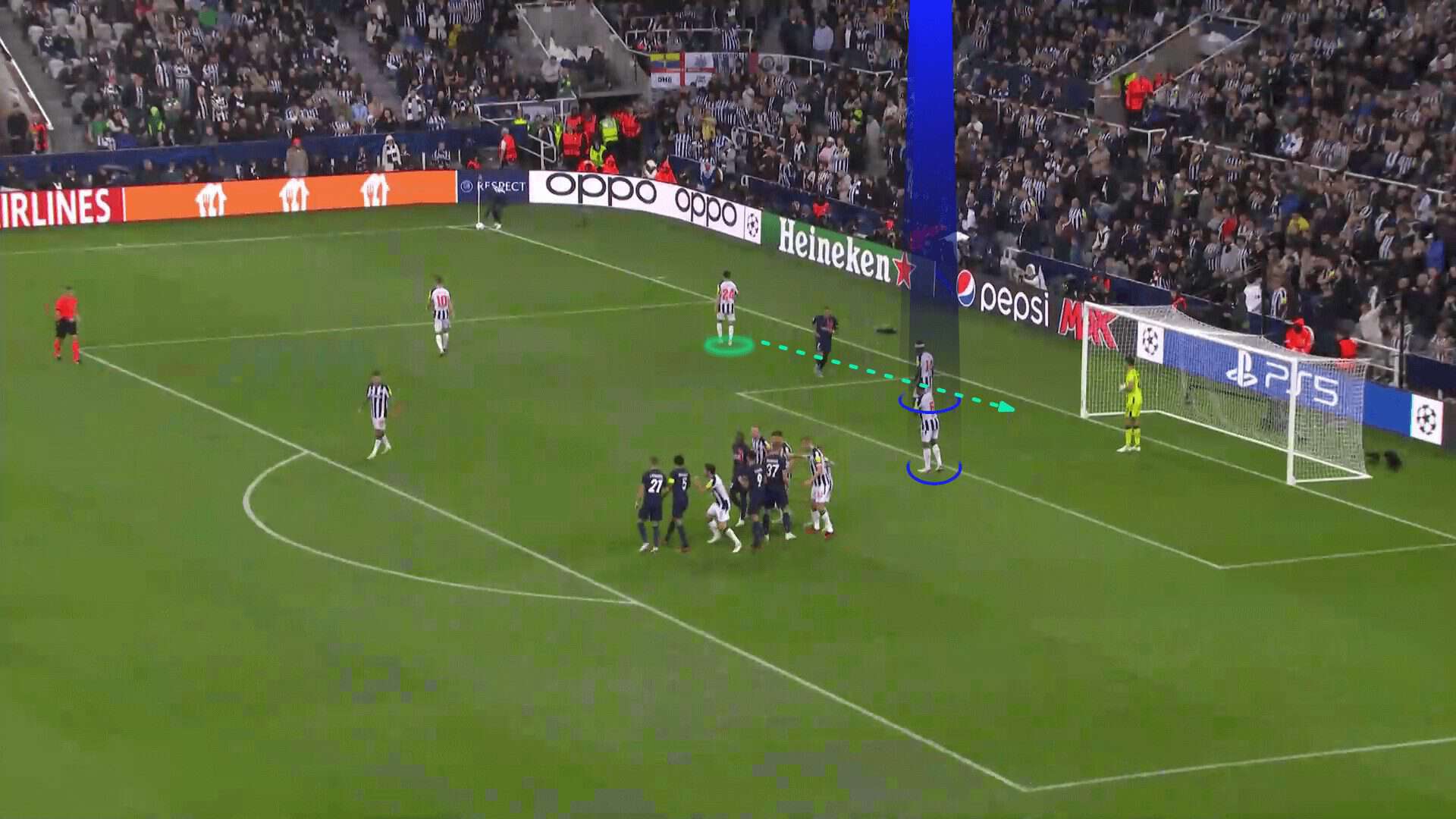
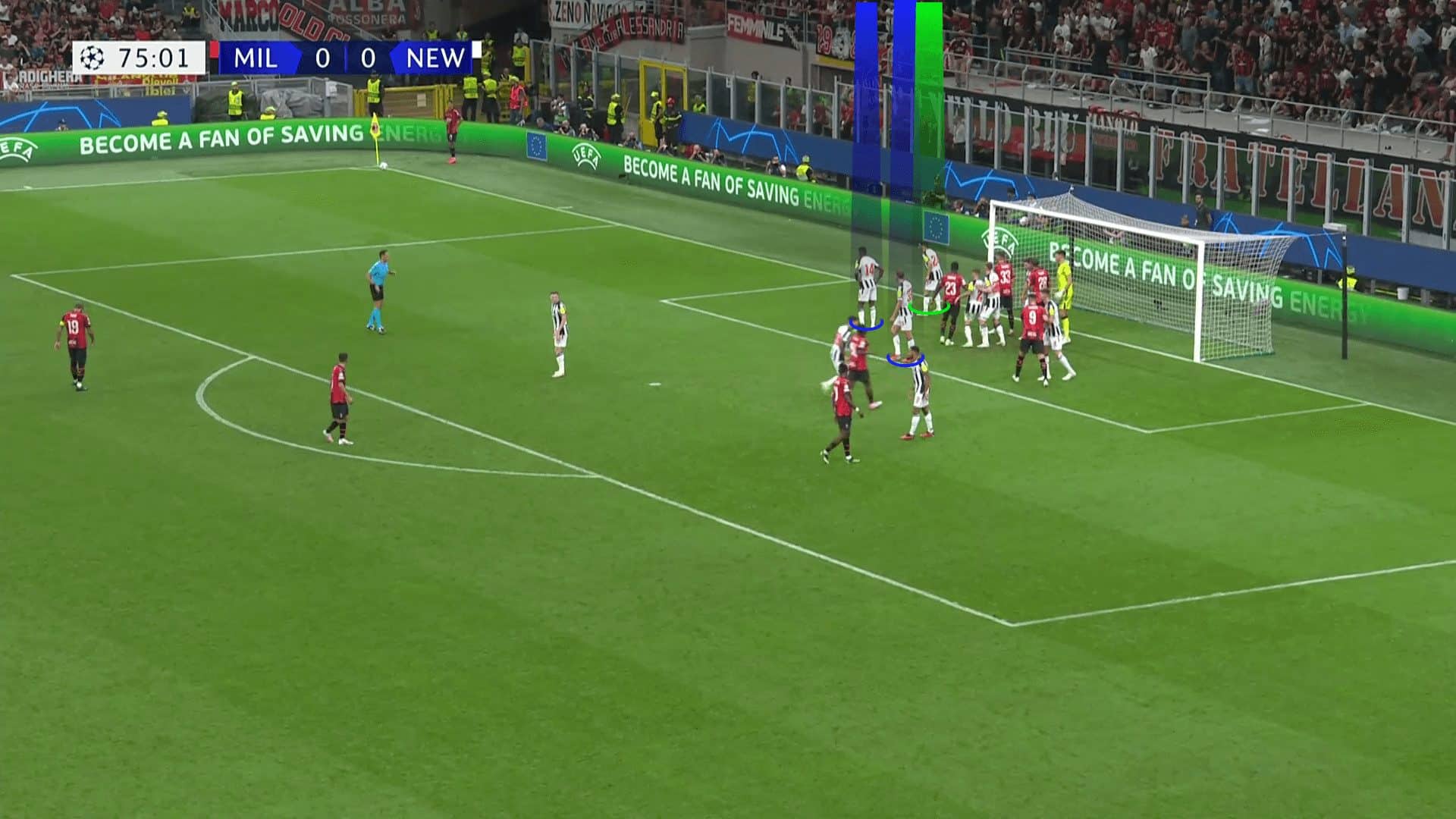
Against the out-swinging crosses, they use the same system, but the two zonal defenders are a bit outside because of the different path of the out-swinging cross, as we will explain.
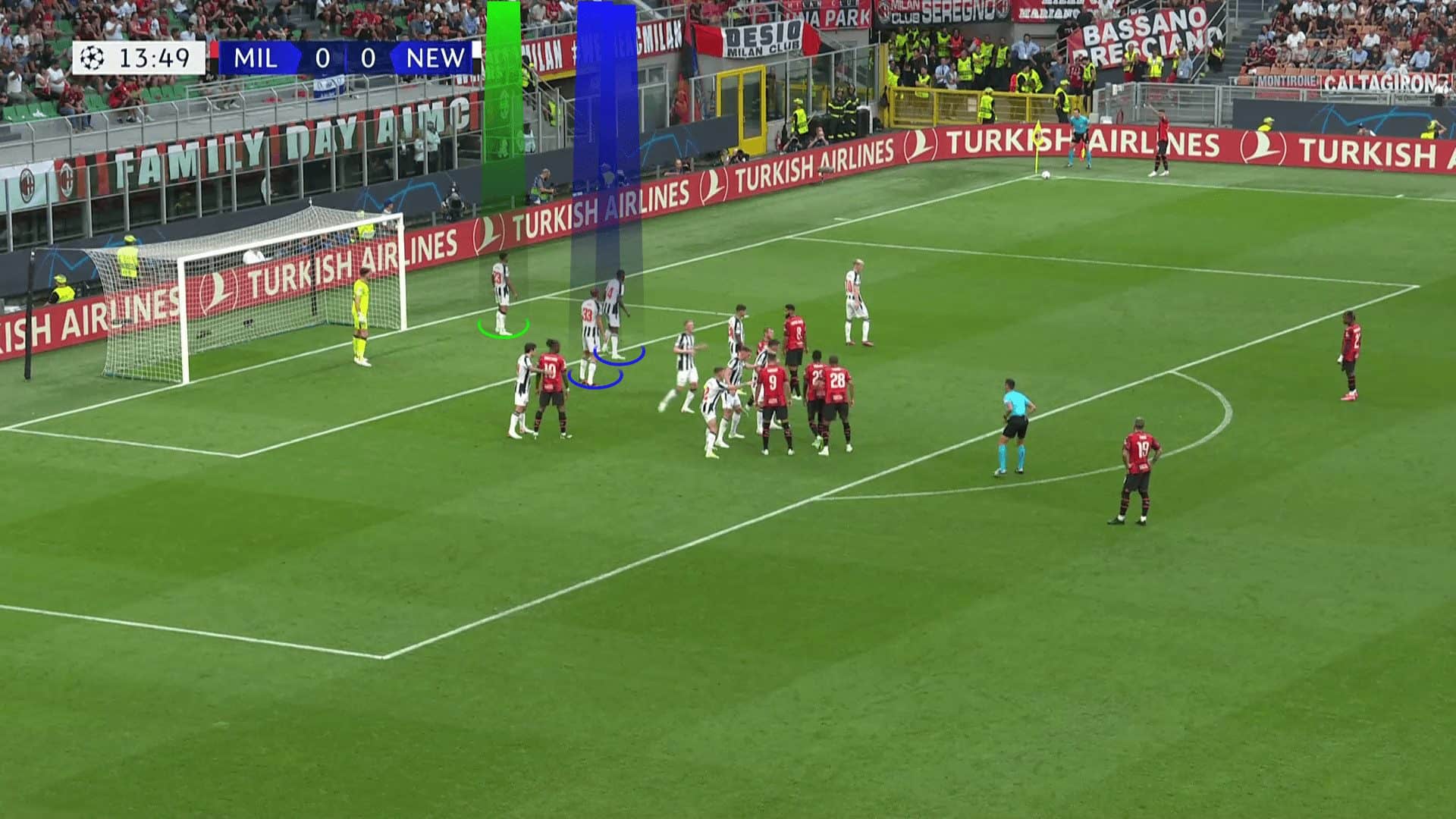
The effect against the in-swinging crosses
We know the difference between the positions of these two defenders in the two teams. Now, we want to understand precisely the effect of this, so we will explain the impact of this against the in-swinging and out-swinging crosses if the opponents try to target the near and the far post to reach the true reason for the contradiction between the large number of goals conceded by Lens from set-pieces and their good numbers as xG conceded from set-pieces meaning that they concede most of the chances from far areas.
In the first photo below, we will start by targeting the near post by in-swinging crosses. The near zone is the responsibility of the two defenders, especially the first one. In contrast, the near-post defender defends the first touch, tracking anyone trying to do a flik or go to receive a short pass, so it is clear that the near zone is well-defended, as shown in the second photo below.
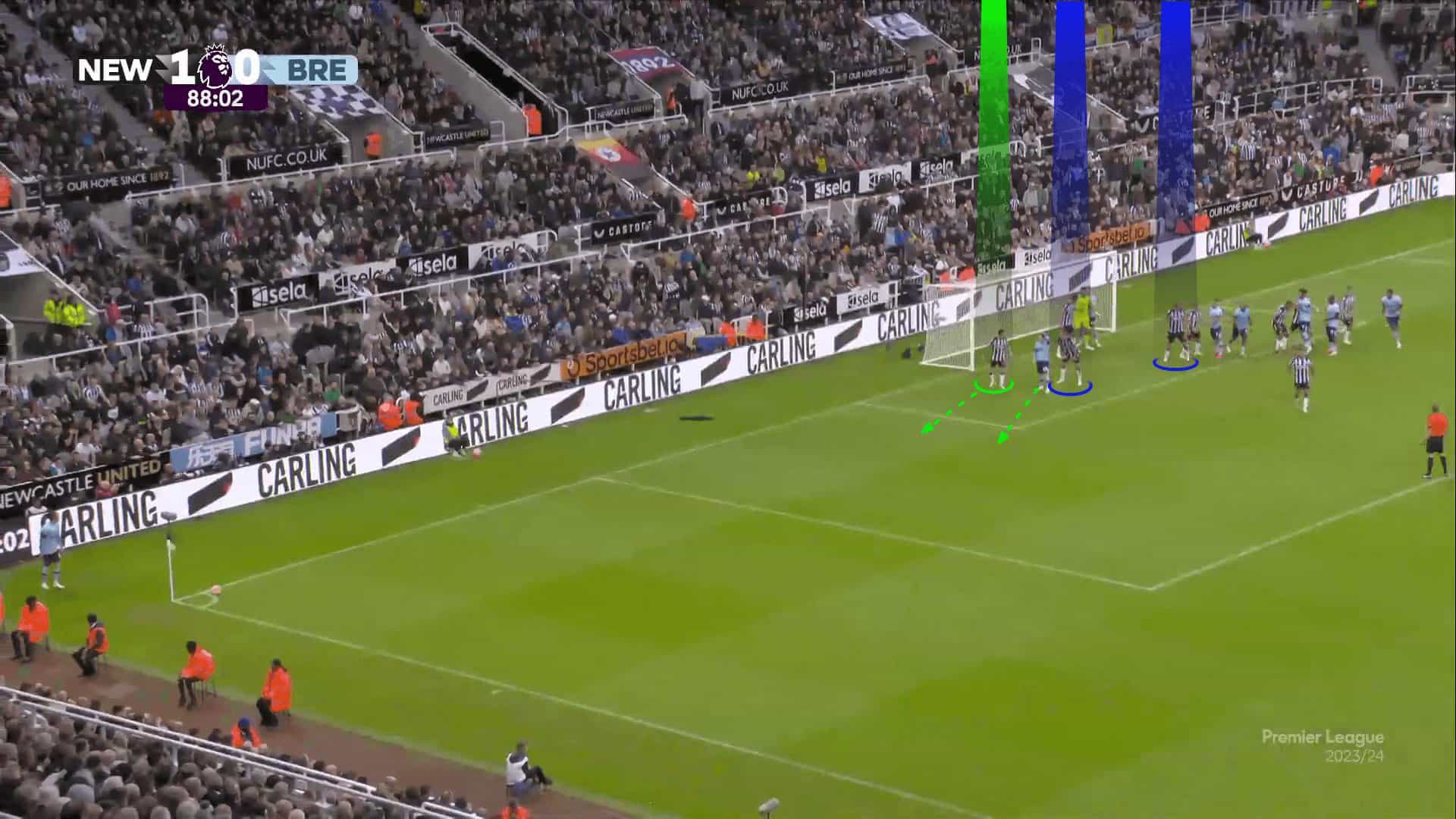
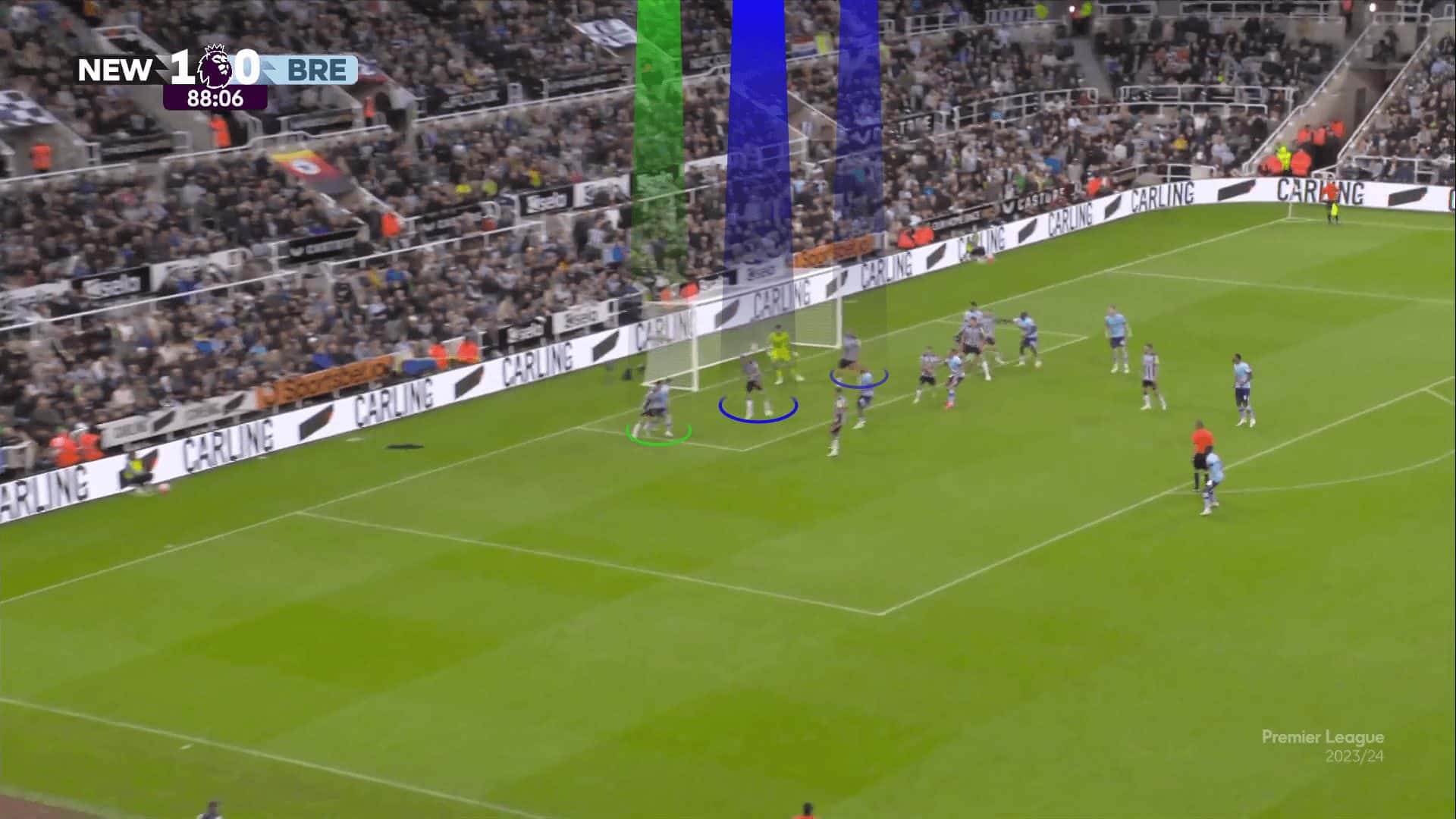
We will compare that with our team, Lens, in the first photo below so we find that the near zone is also the responsibility of the two zonal defenders, so there is no problem with that, as shown in the second photo below.
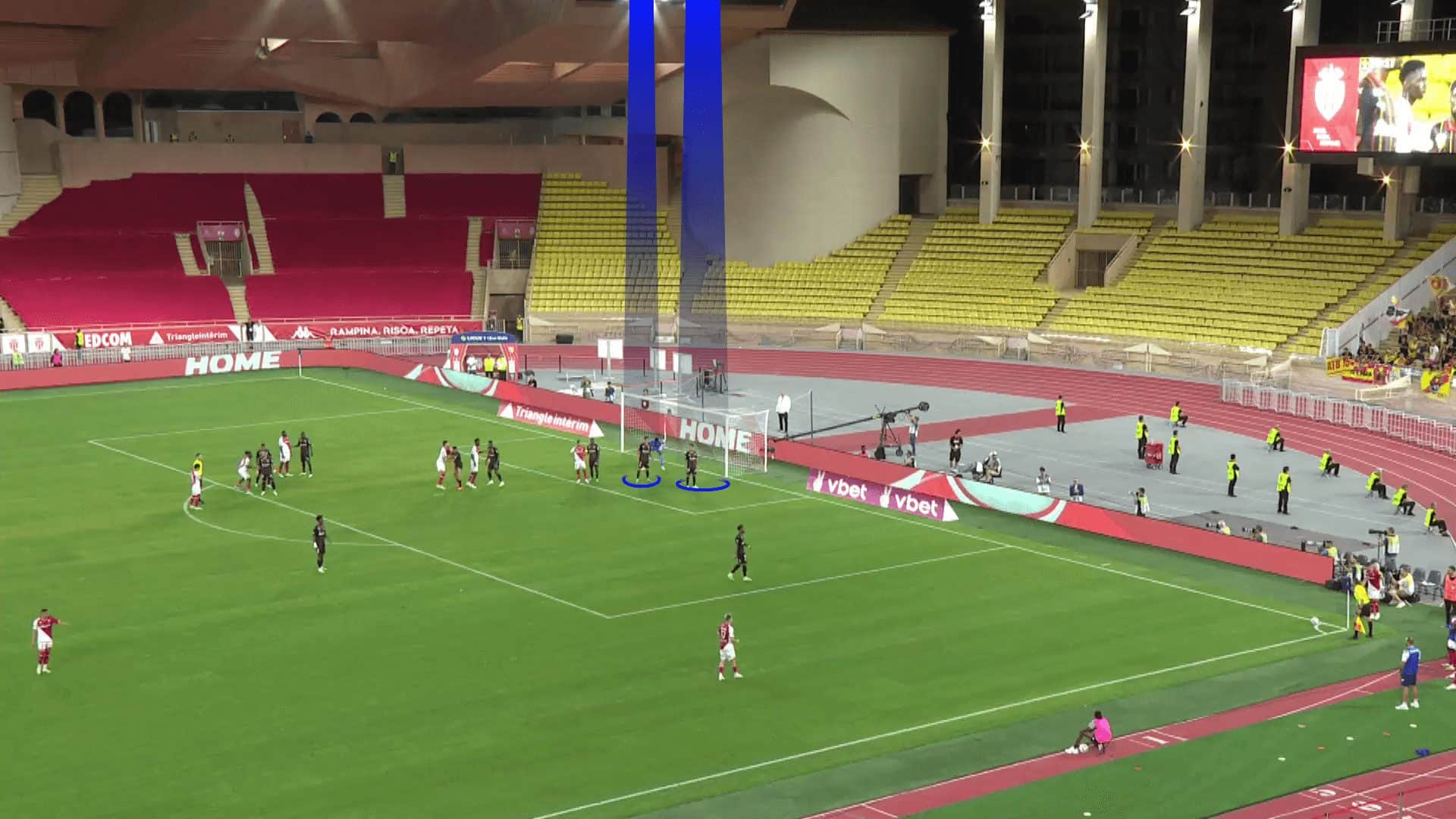
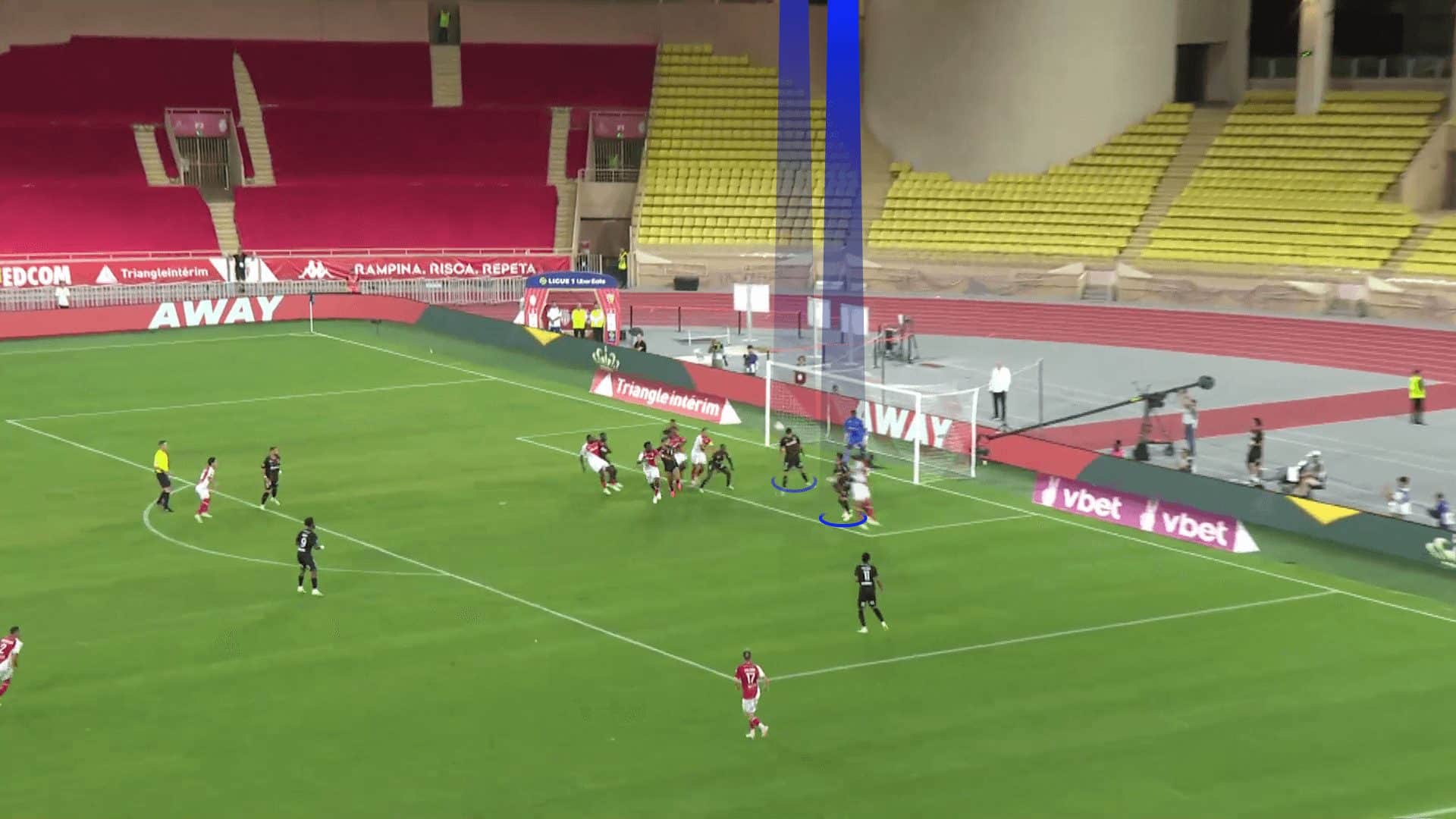
Here, we come to discuss targeting the area after the near-post zone, the middle and the far post, by also in-swinging crosses, and we find that the goalkeeper should intercept this cross, as shown in the two photos below.

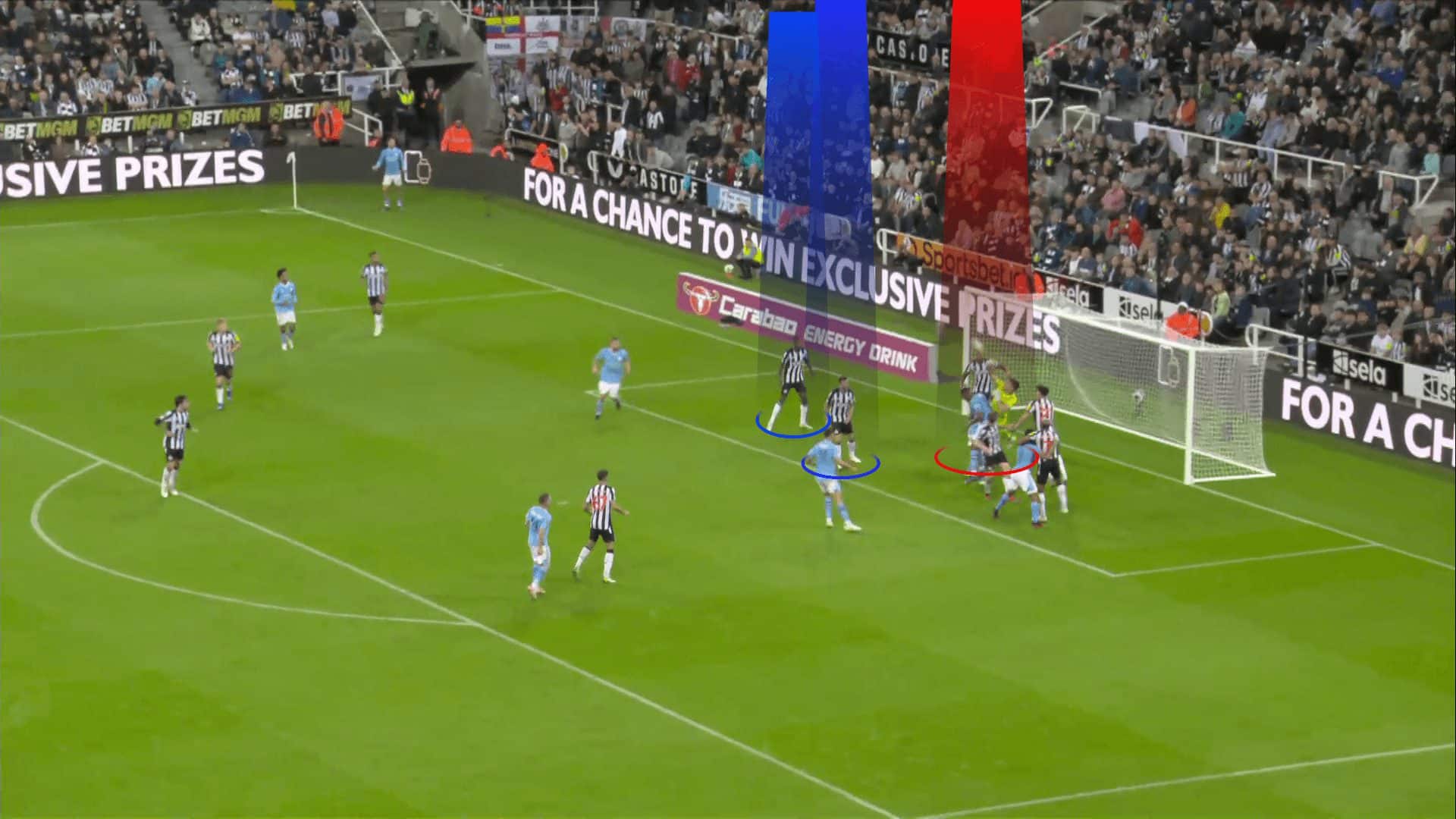
Our team, Lens, use the same system depending on the goalkeeper to cover the area behind them, as shown in the following two photos, so there are no problems in defending against the in-swinging crosses.
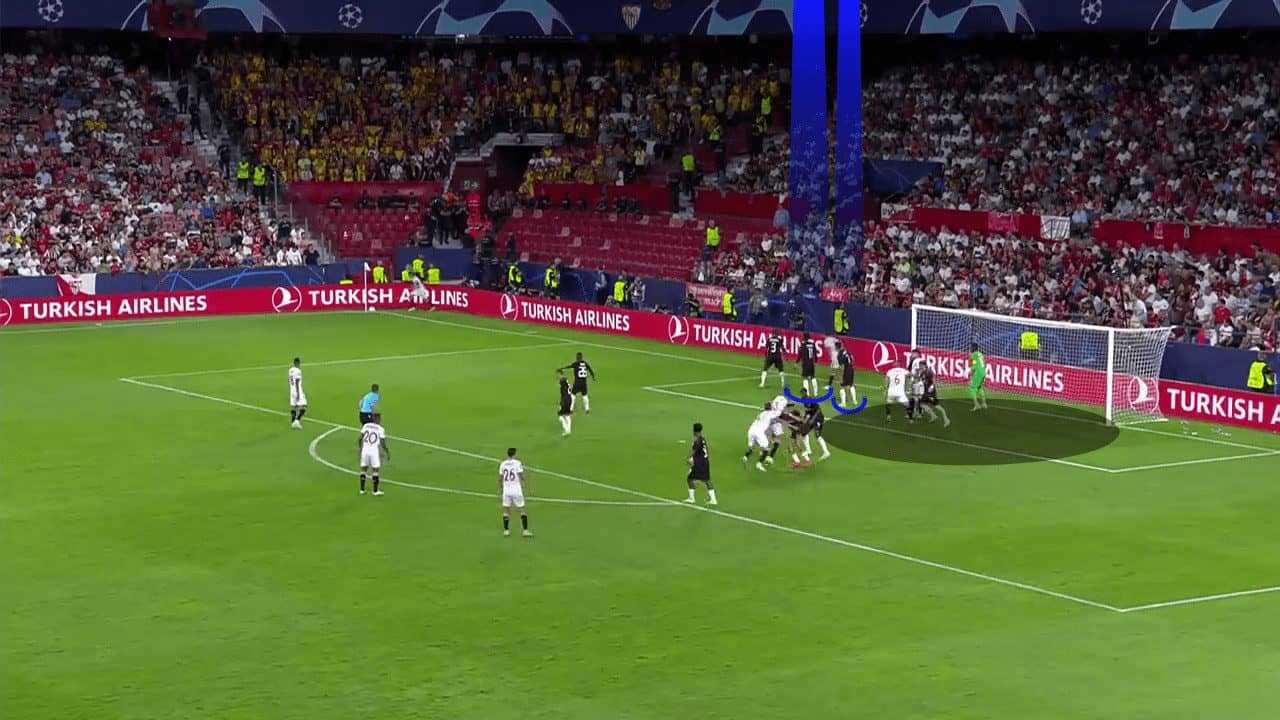
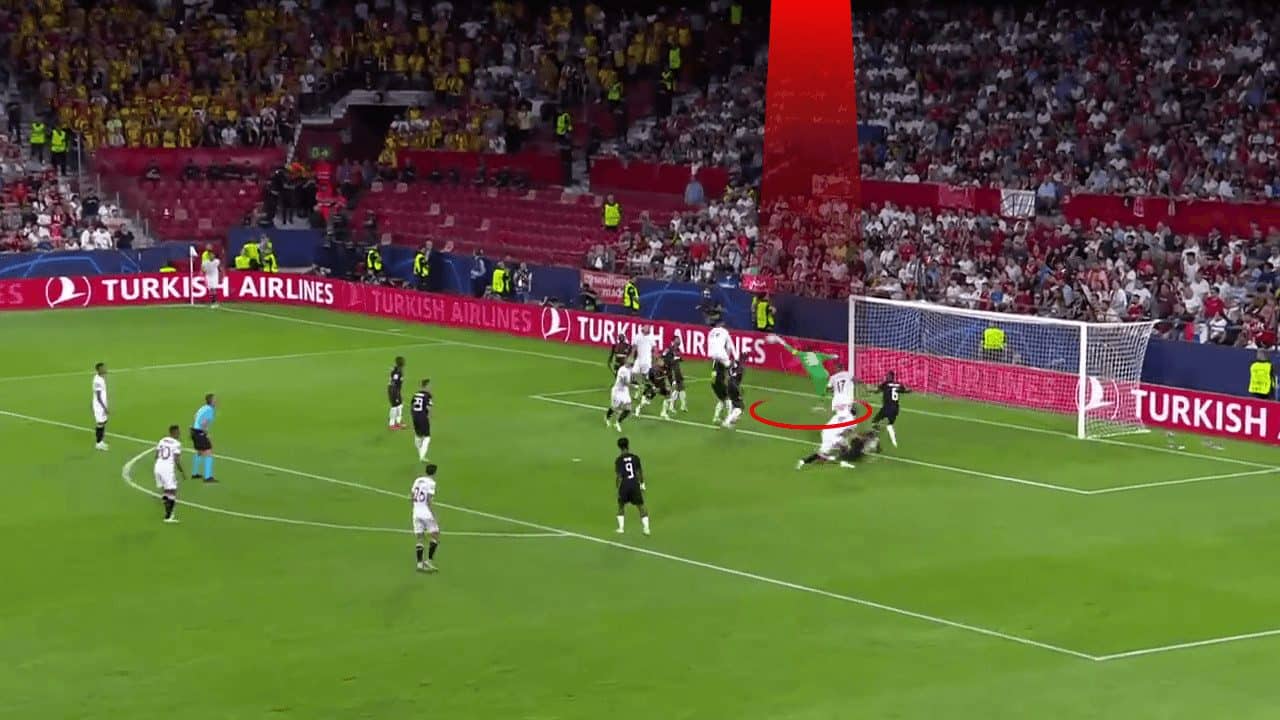
The effect against the out-swinging crosses
Here, we will use the same method comparing the way two teams use to defend the out-swinging crosses if the opponents target the near or far post.
In the first photo, we start with targeting the near post by out-swinging crosses. We find that they made the two zonal players move more to the outside, especially the second one, who stands outside the six-yard, because of the path of the out-swinging cross, which helps them to defend the near-post crosses, as shown in the second photo below.
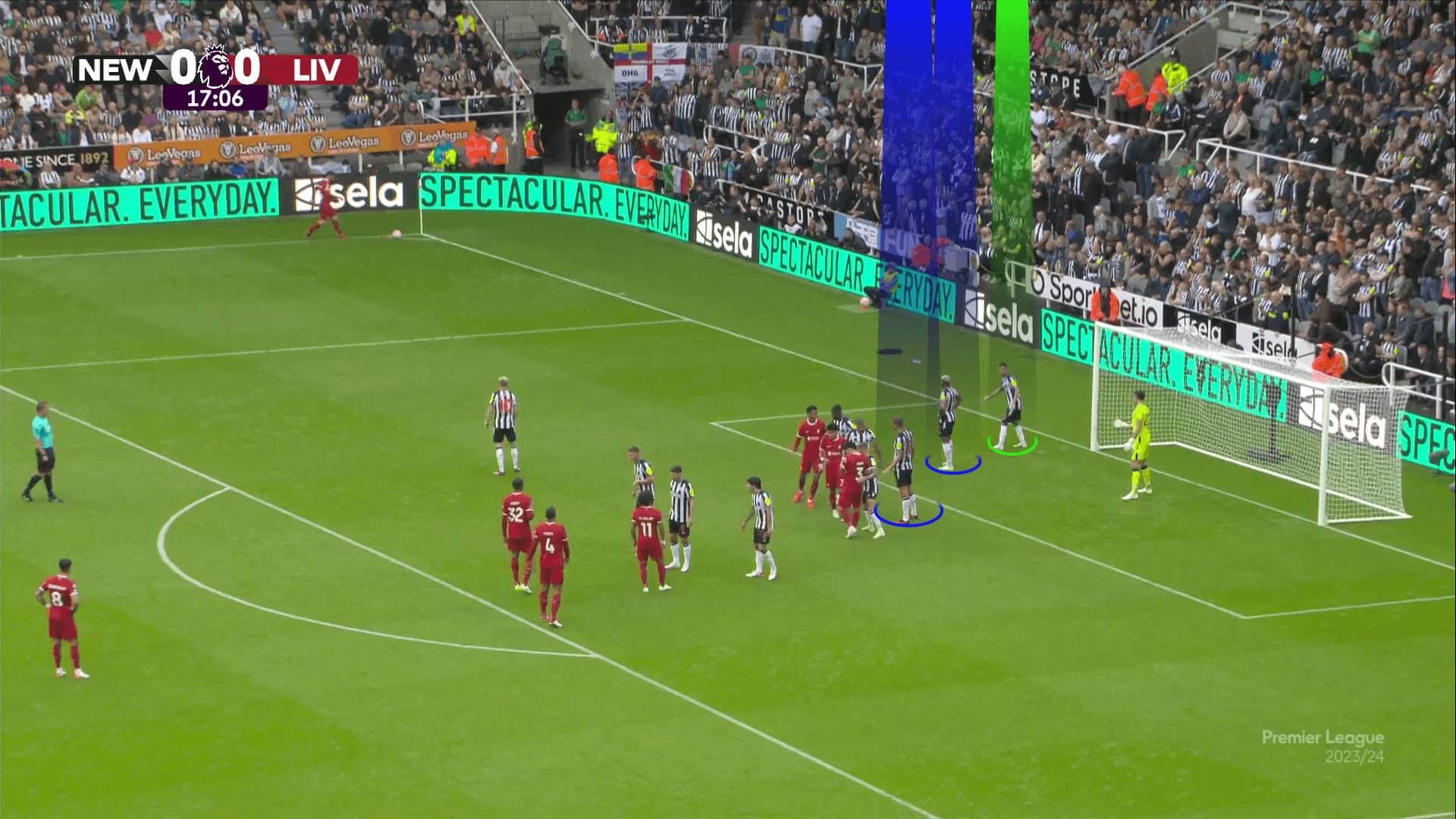
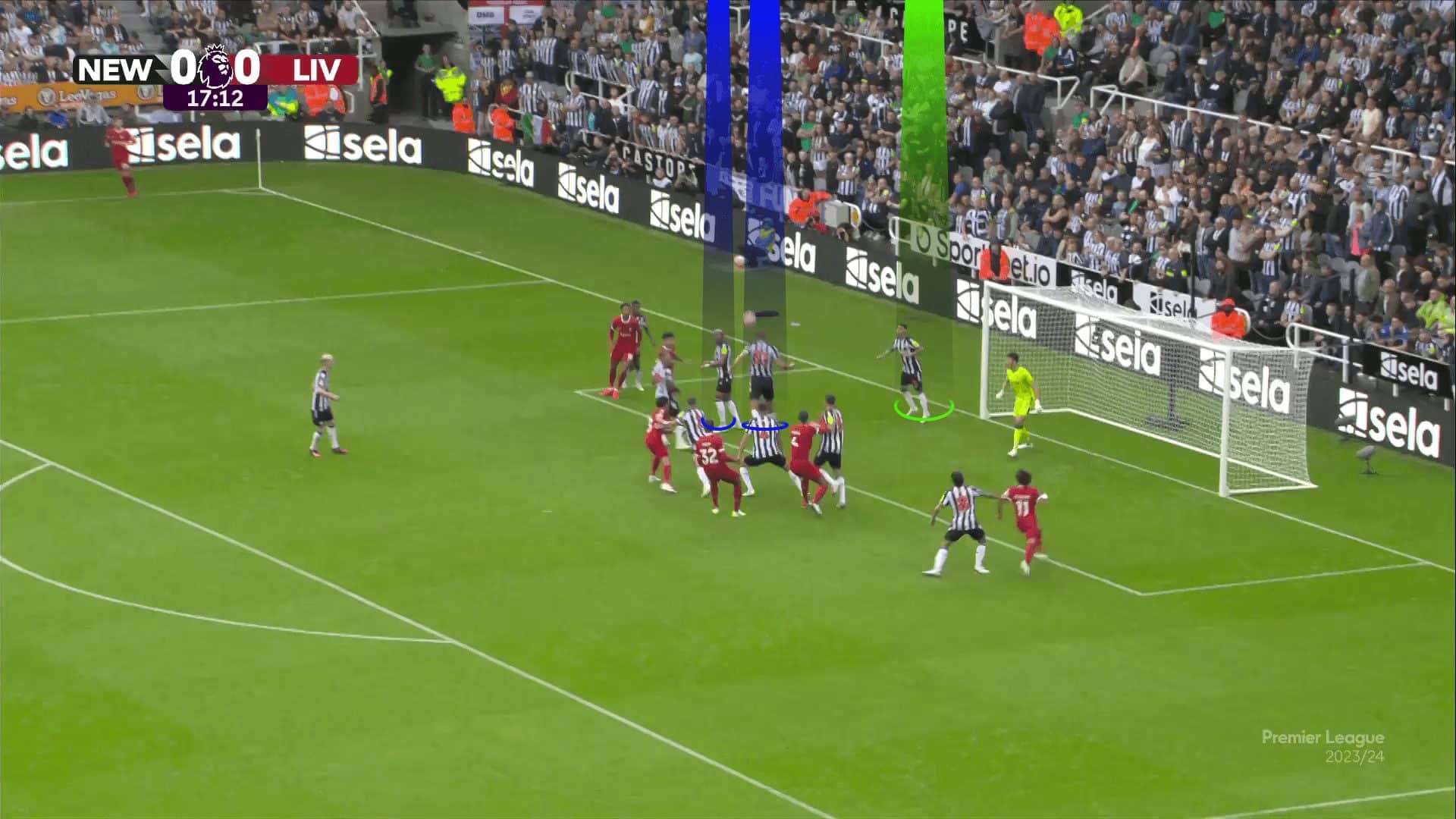
Although Lens’ two defenders aren’t inclined, they stand more to the outside near the six-yard, which helps them to defend the near-post.
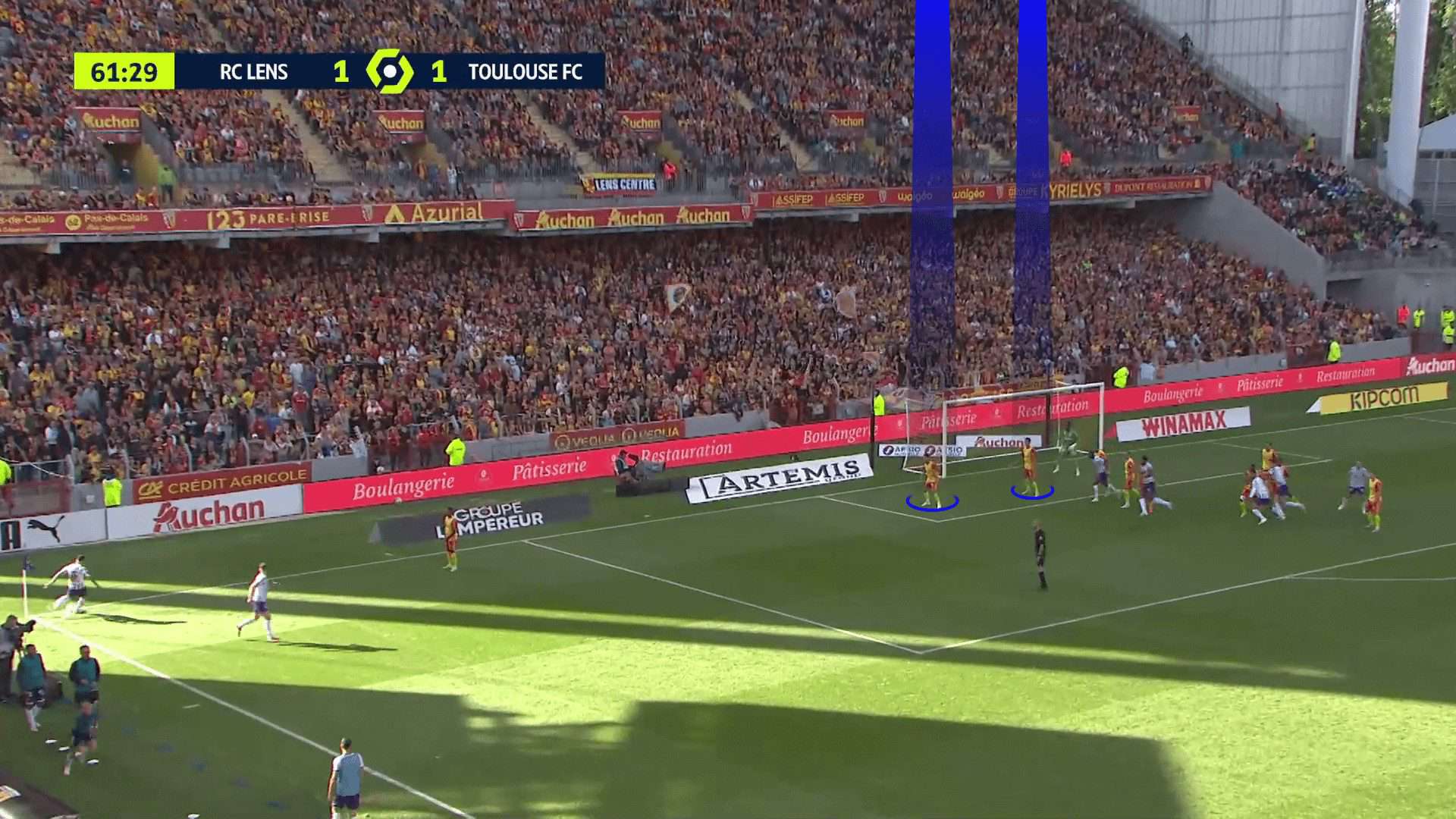
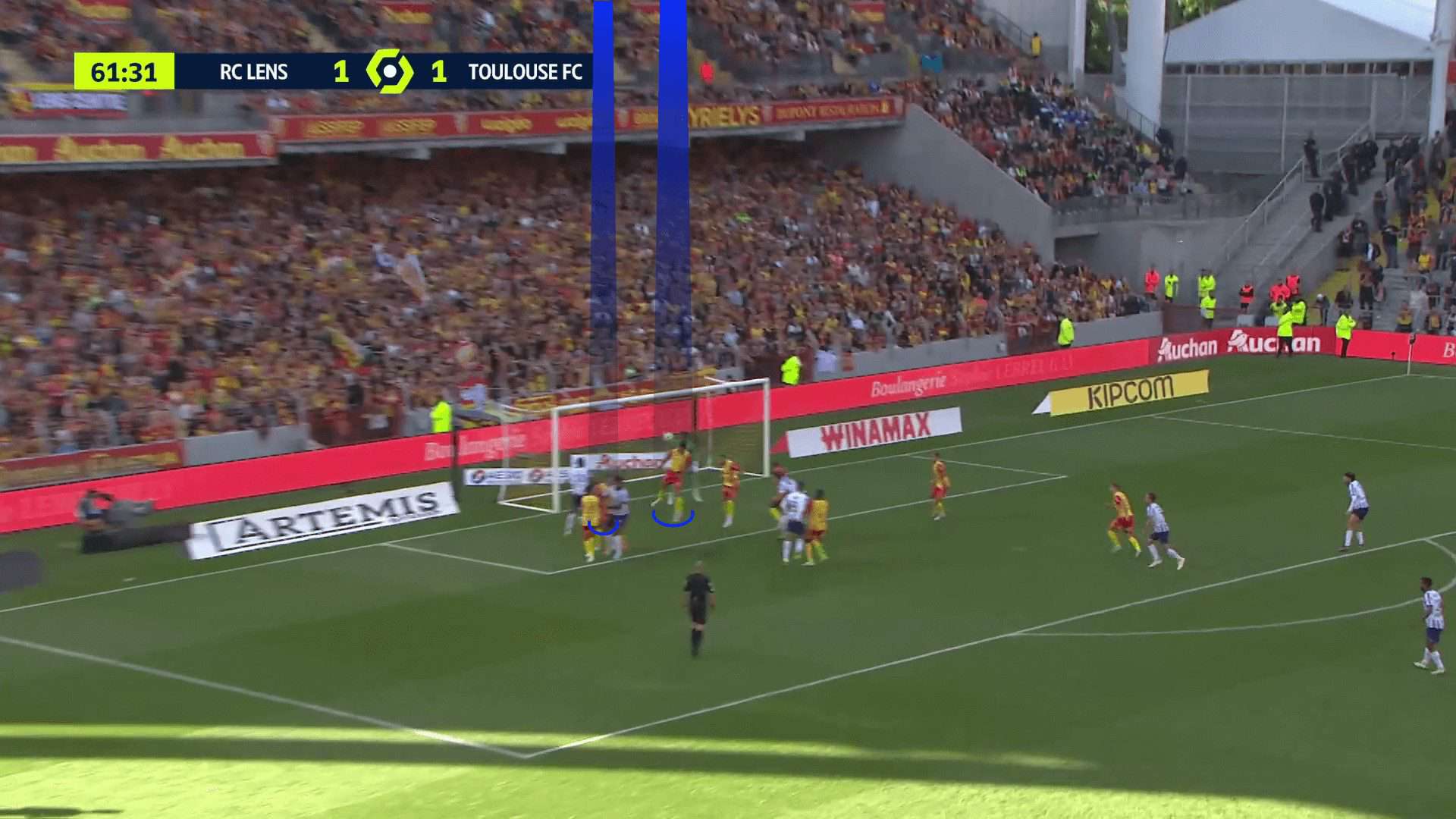
We come to the last probability, which is targeting the middle or far areas by out-swinging crosses, as shown in the first photo below, so we come to the use of the second zonal marker, Dan Burn, Who stands outside the six-yard to intercept the ball from getting the covered area by an out-swinging cross to kill the problem in its infancy, as shown in the second photo below.
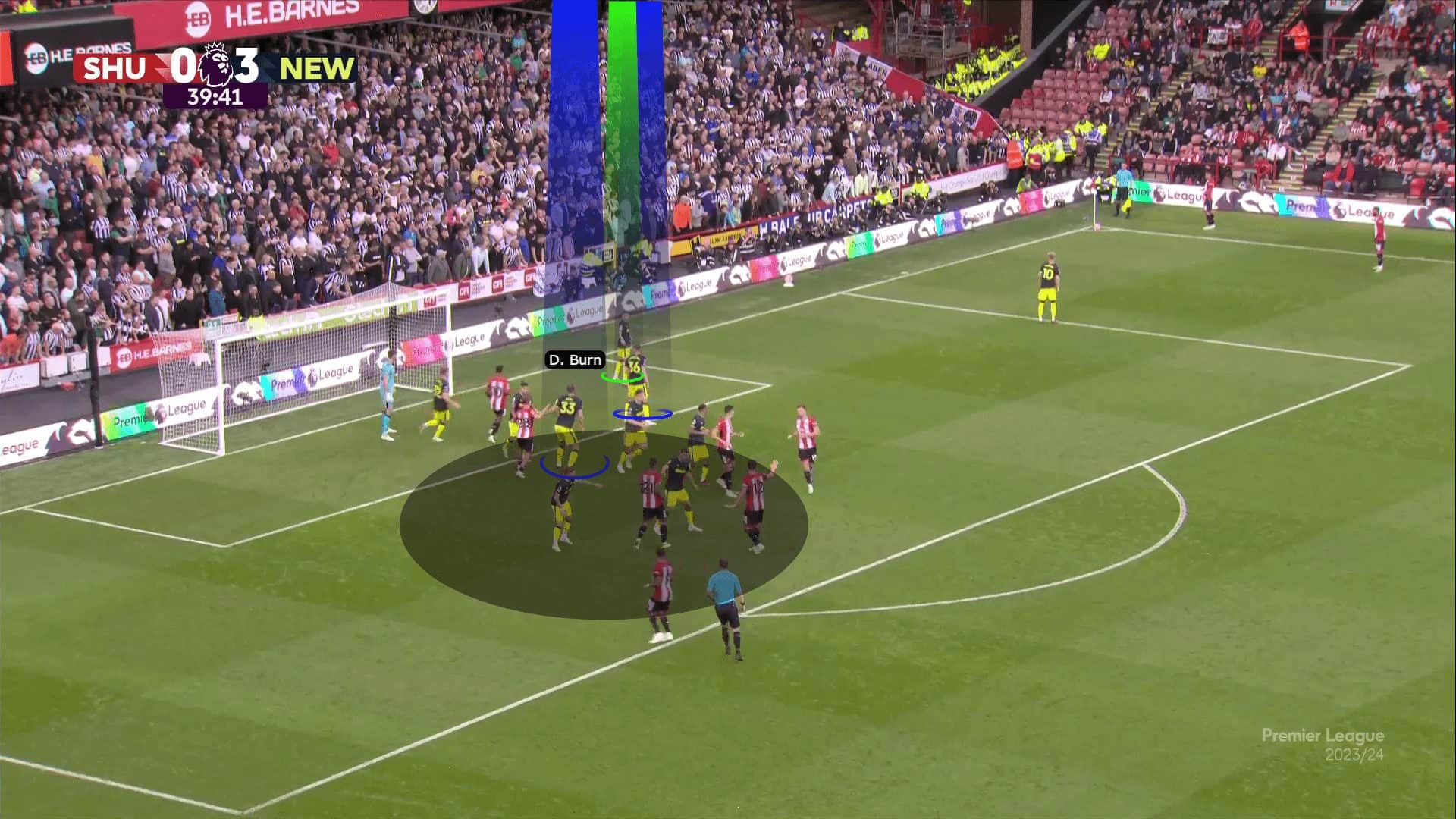
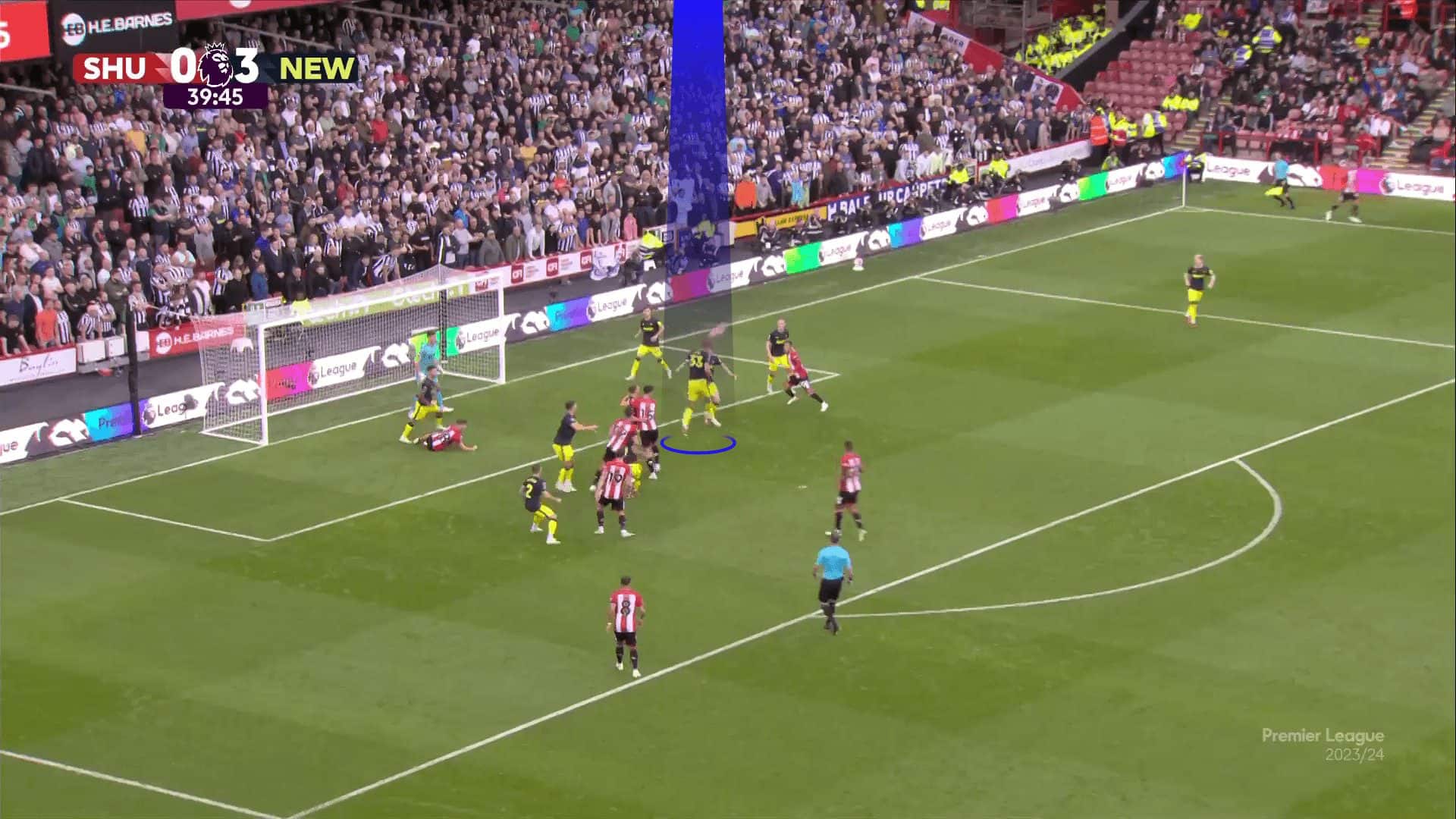
We see Lens, whose two defenders aren’t inclined in the first photo below. Both of them are inside the box, so the middle black area isn’t protected because the second zonal defender can’t intercept the green path of the out-swinging cross. In contrast, the goalkeeper can’t intercept this cross because the out-swinging cross gets farther from the goalkeeper whenever it becomes nearer the targeted area, unlike the in-swinging cross. That means that if any attacker can escape from his marker, he will easily target this area, which happens in the second photo.
In the second photo, Sergio Ramos moves to the left and then performs a feint to the right as the taker touches the ball. In the third photo, his marker has an orientation problem because he can’t track the ball and Ramos simultaneously, so he becomes free, as in the fourth photo.
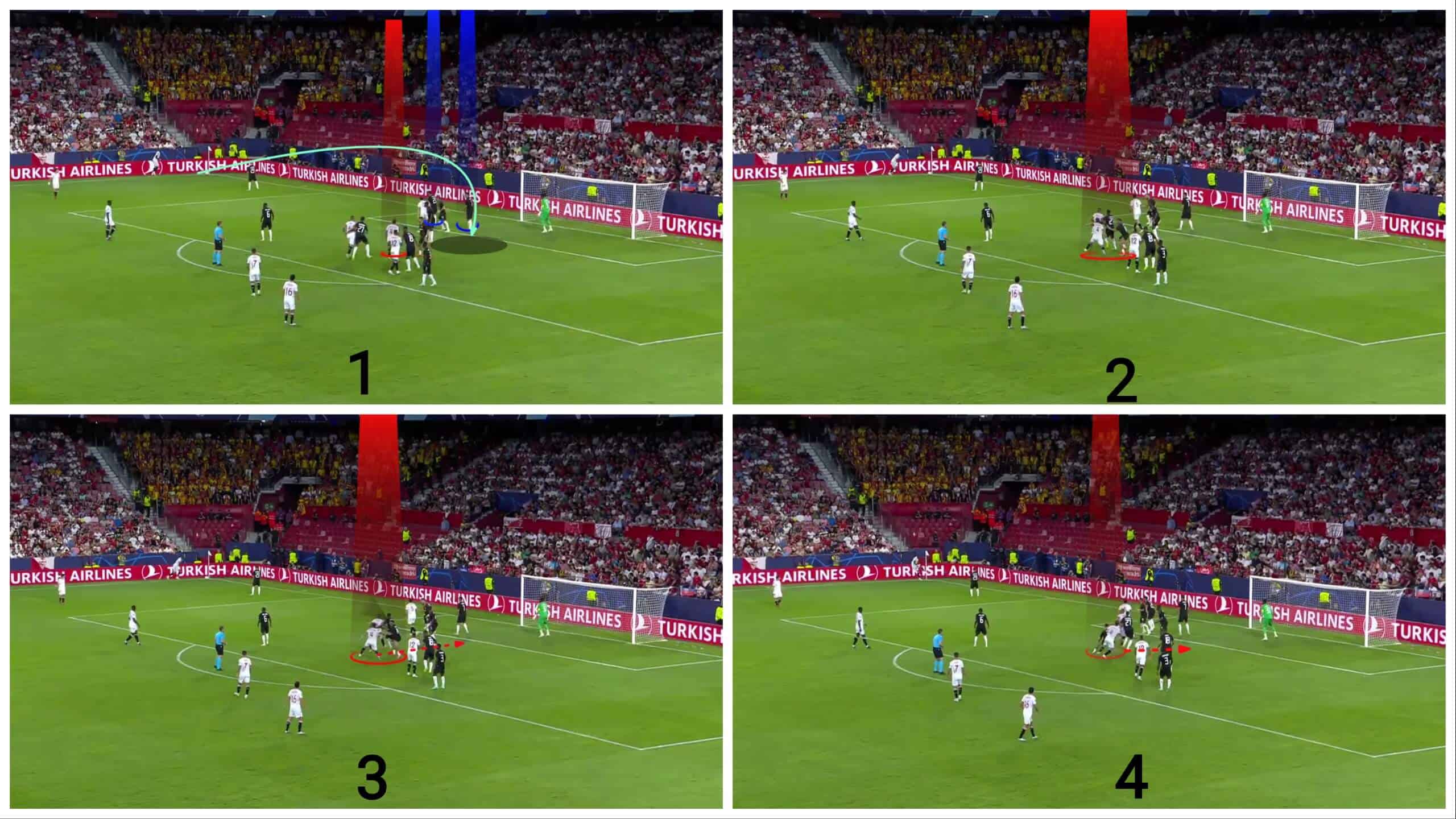
He quickly gets the ball, but the headed shot goes beside the post, as shown below.
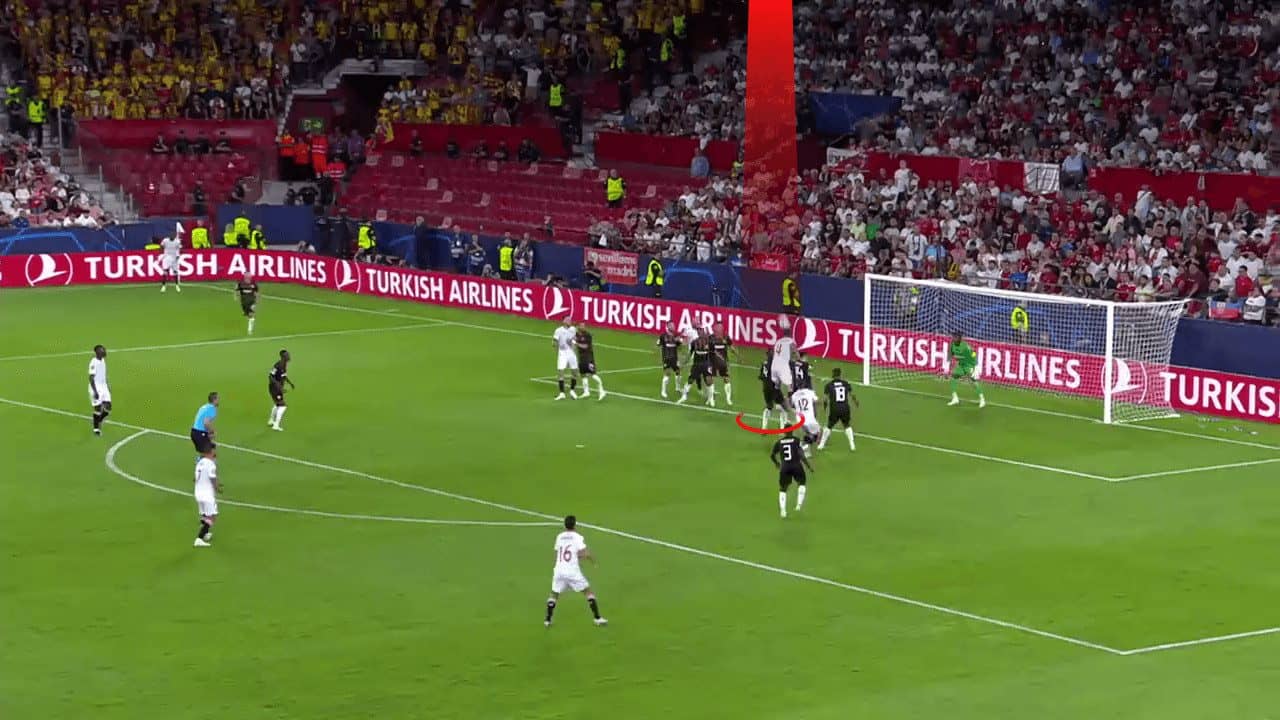
In the first photo, we have another case where the opponents target far areas, less XG, by out-swinging crosses. In the second photo, the targeted player also had the same orientation problem caused by the out-swinging cross to escape from his man marker, so he faked to the right.
In contrast, the marker tracked the ball in the air, so the marker decided to track him to the right, losing communication with the ball, so the attacker moved back to the left, as in the third photo, and he became free, as in the fourth photo.
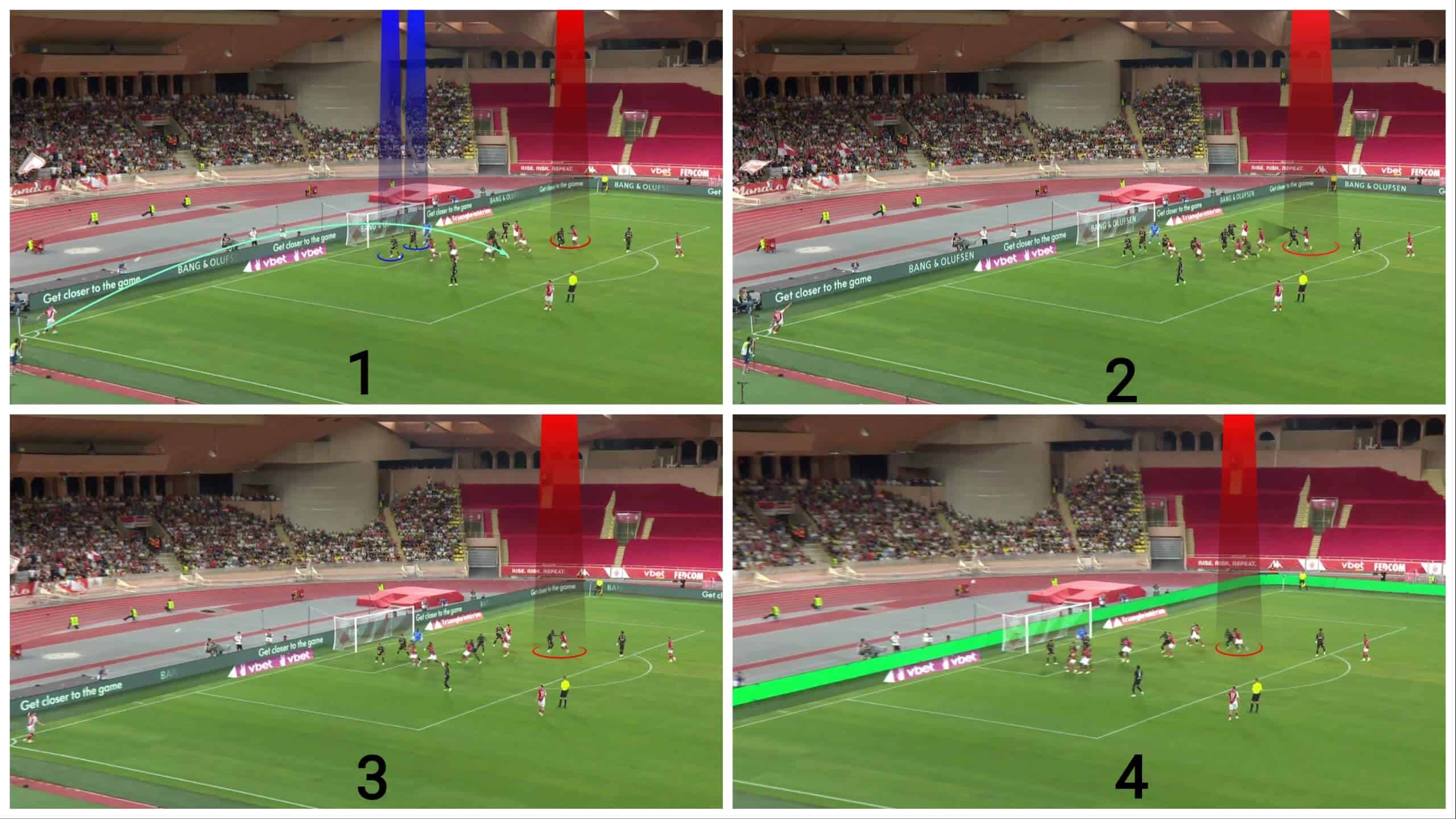
The result is a goal, as shown in the two photos below.
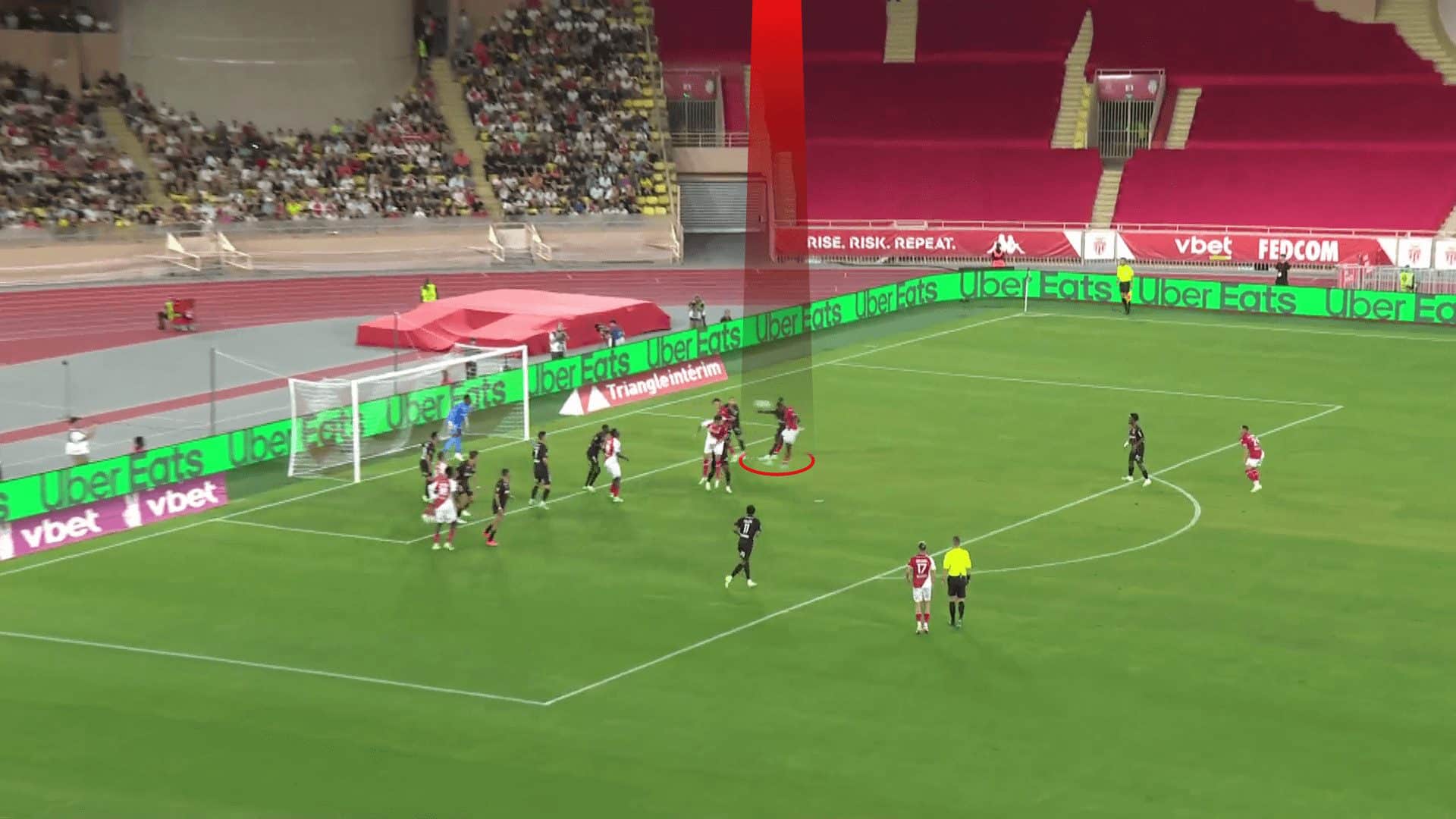
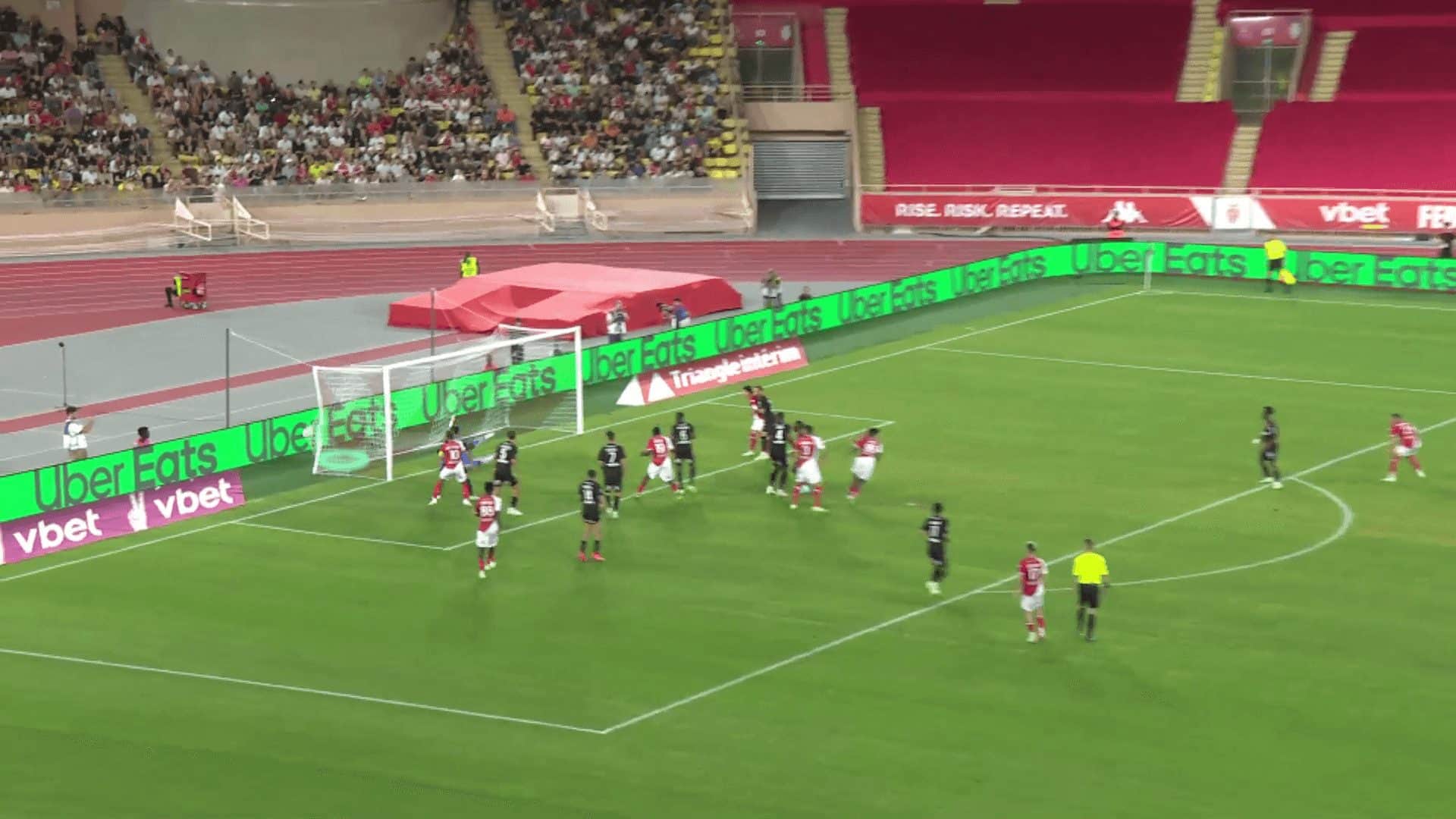
It is clear that targeting these far areas by out-swinging crosses makes the two zonal defenders and the goalkeeper out of the calculations, so all the opponents should do is make the targeted player escape from his man marker by using the principle of mismatch, targeting a player who is better than his marker in aerial duels like Sergio Ramos, and the orientation problems caused by the out-swinging crosses.
Here, the opponent uses another way to make the targeted player escape from his man marker: a screen by a stack, as we will explain.
In the first photo, the opponent uses the out-swinging cross to target nearly the same previous area we talked about. In the second photo, the targeted player stands behind his mate in a small stack to use him as a screen, while the markers don’t know the directions they will move.
In the third photo, the targeted player gets the targeted area quickly because of his mate’s screen, highlighted in green, and the result is a goal, as shown in the fourth photo below.
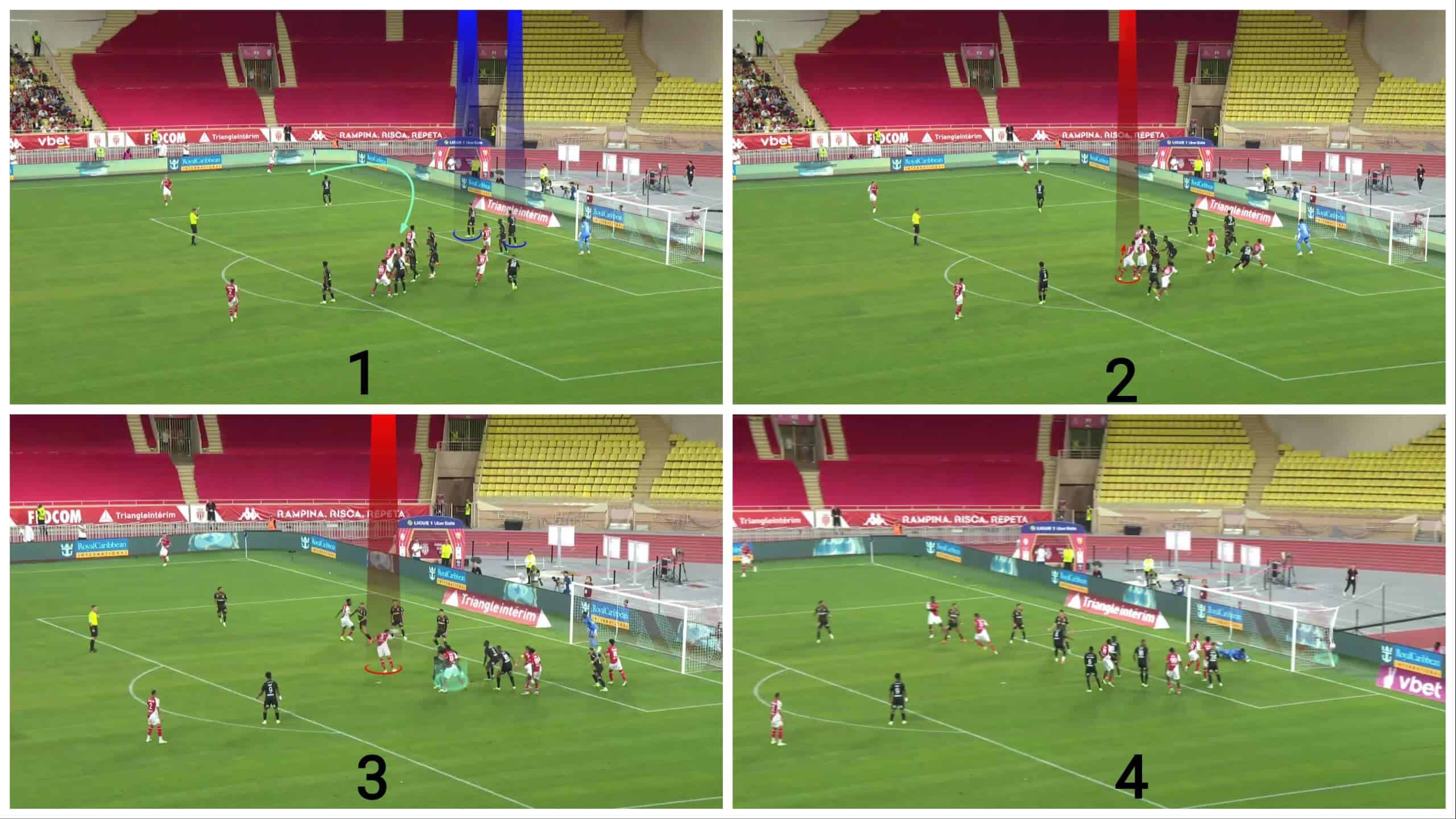
Conclusion
In this analysis, we discussed the defensive system of Lens, which is a man-marking defending system with only two players in zonal marking, and we explained the position of these two players and the extent of their impact on the opponents in setting routines that target relatively distant areas from the goal.
In this set-piece analysis, we clarified the difference between targeting the near and the far post by both the in-swinging and out-swinging crosses against this defending system and how that led the opponents to target relatively far places from the goal by out-swinging crosses.

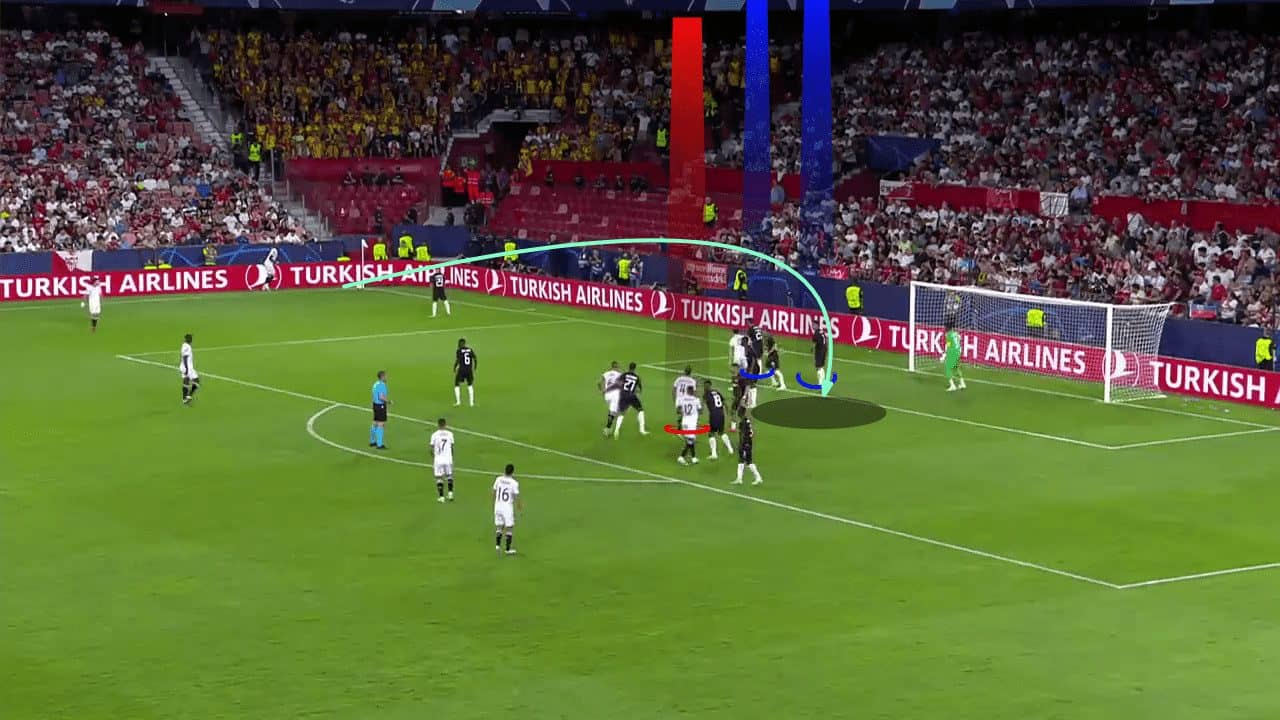




Comments